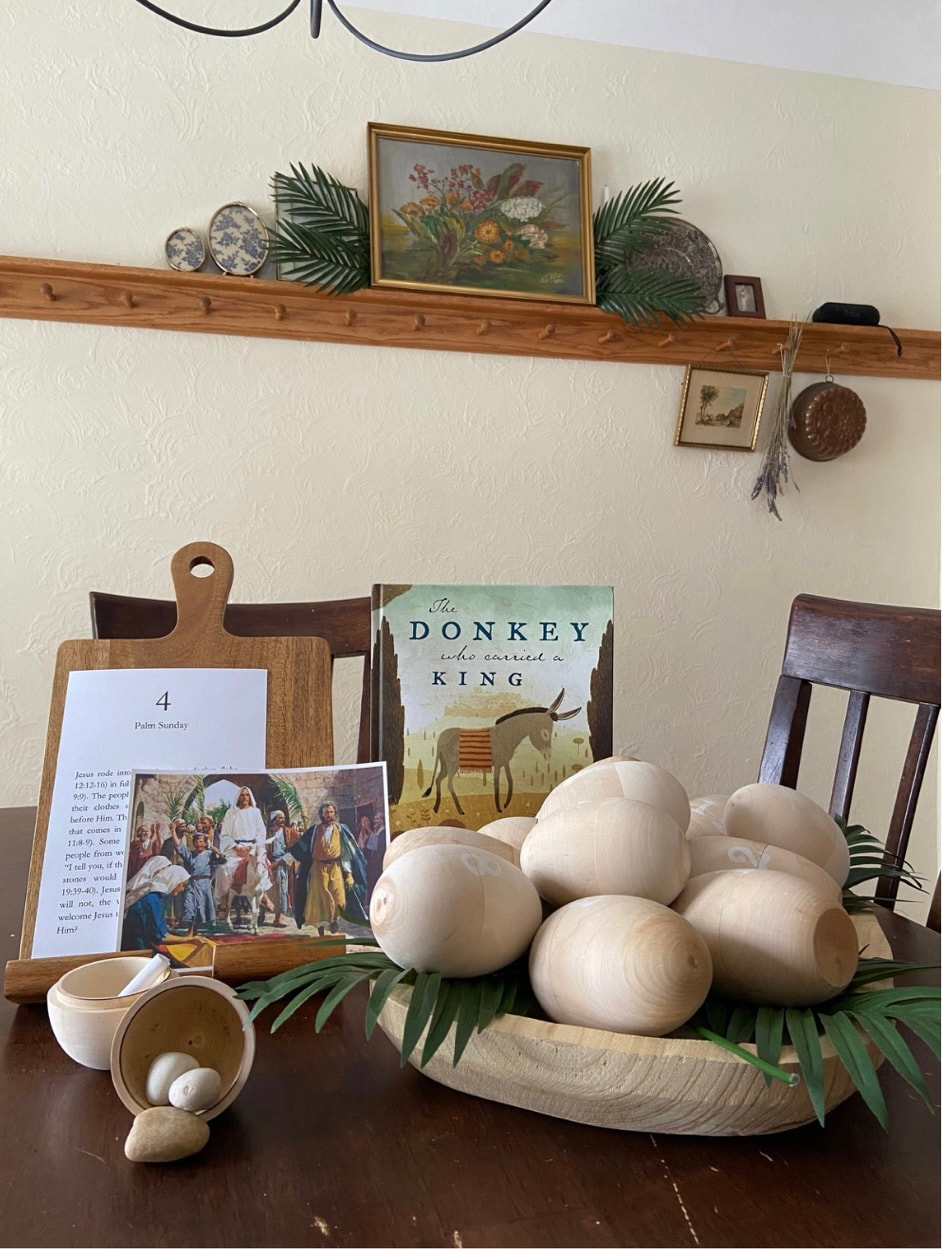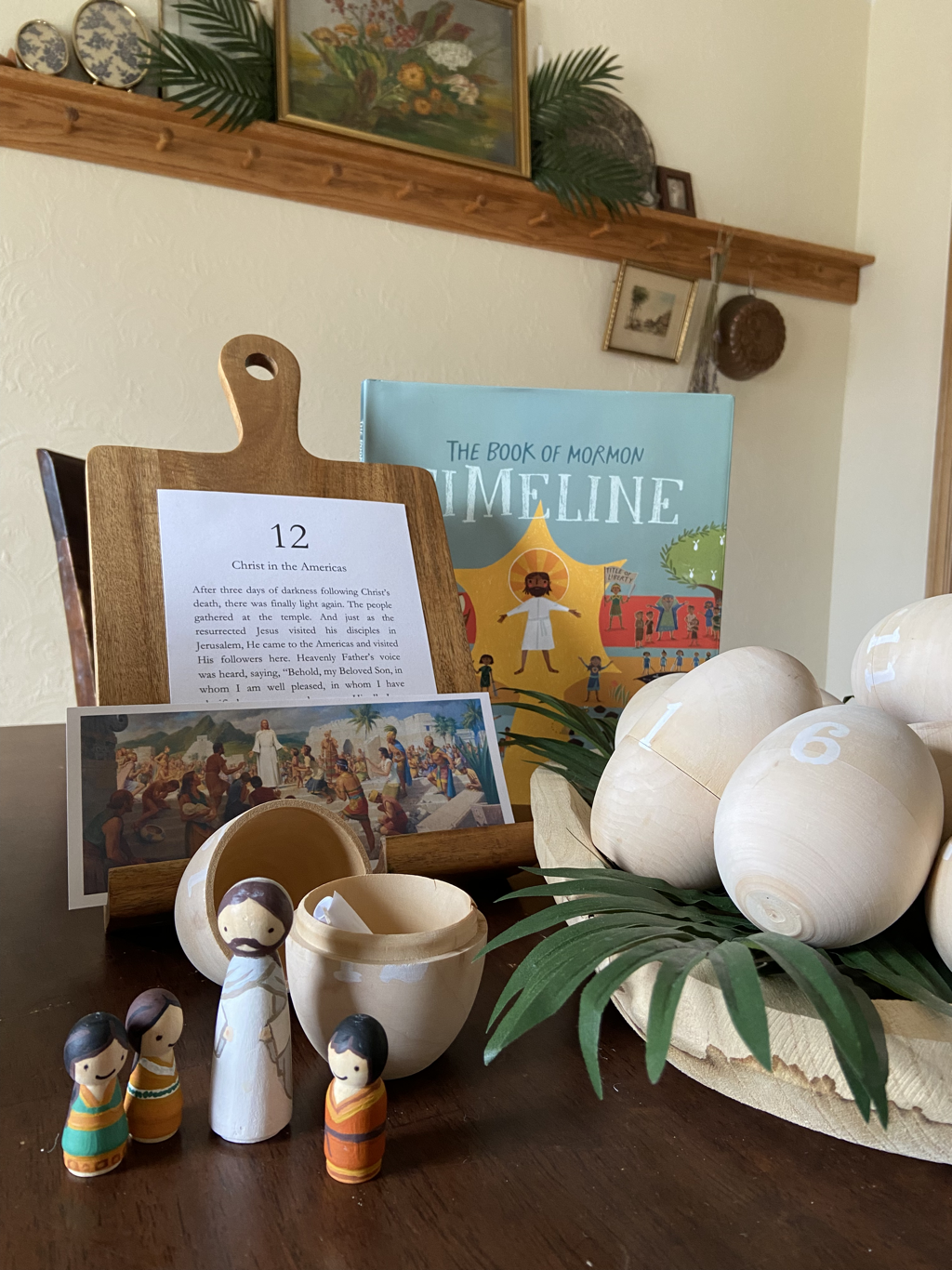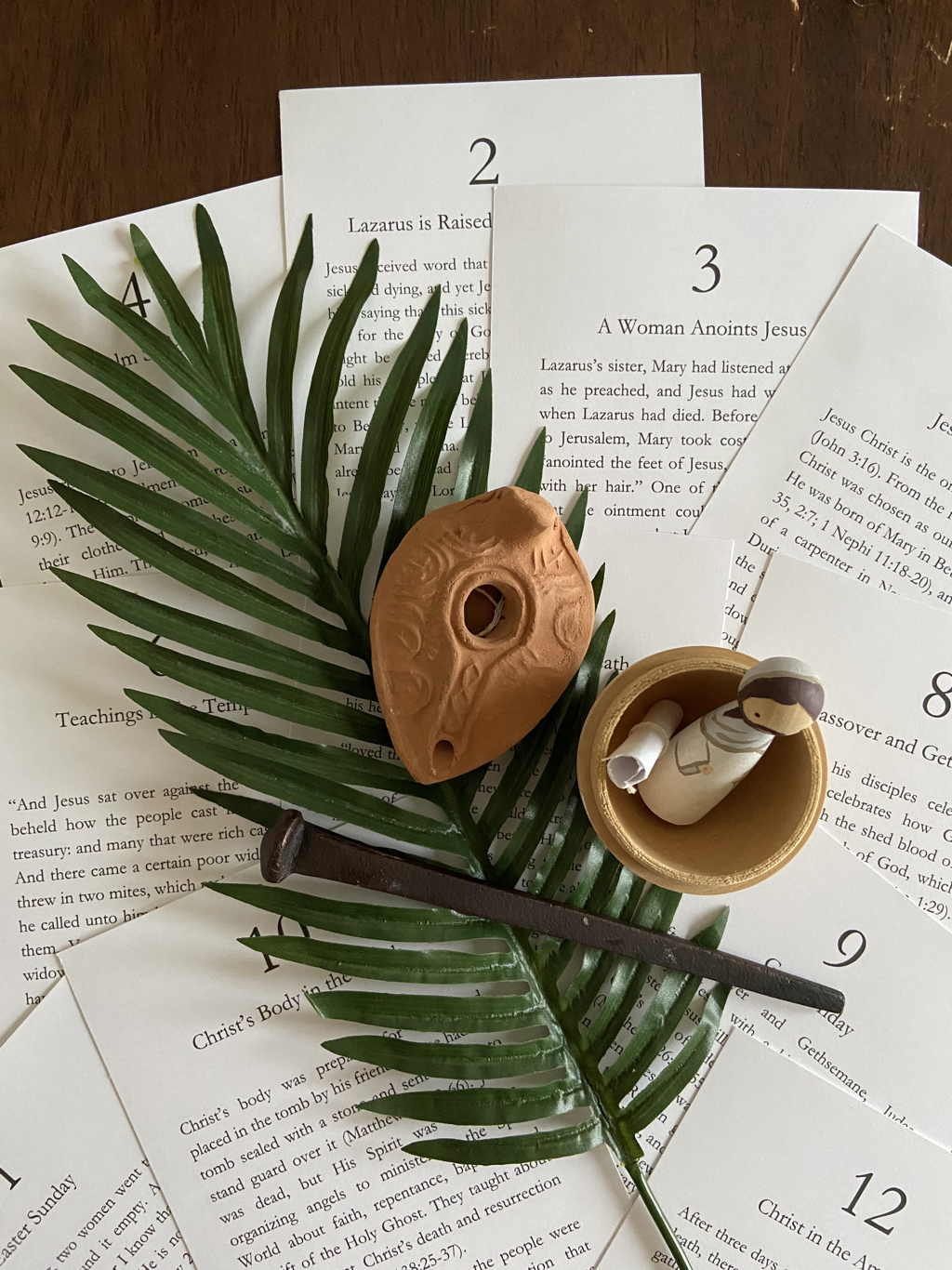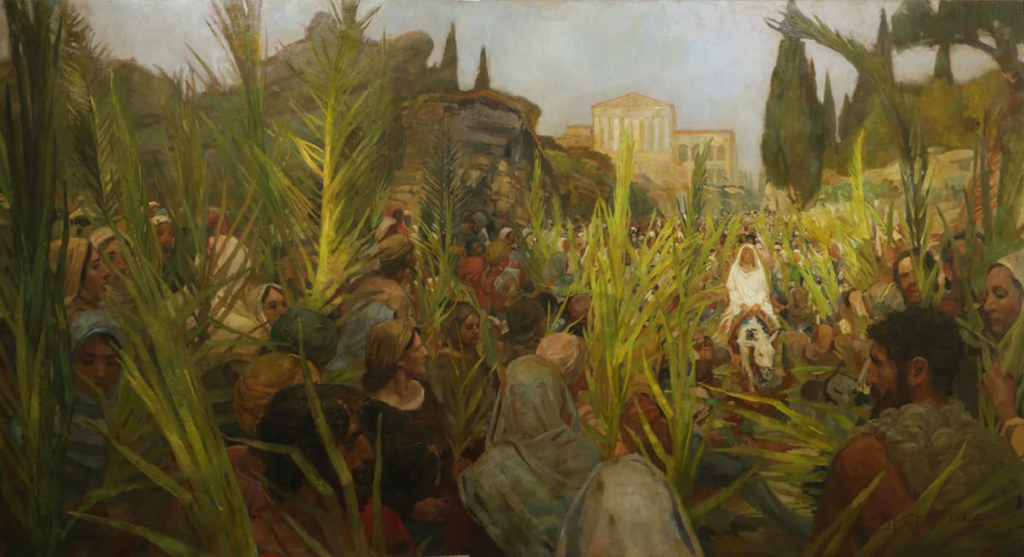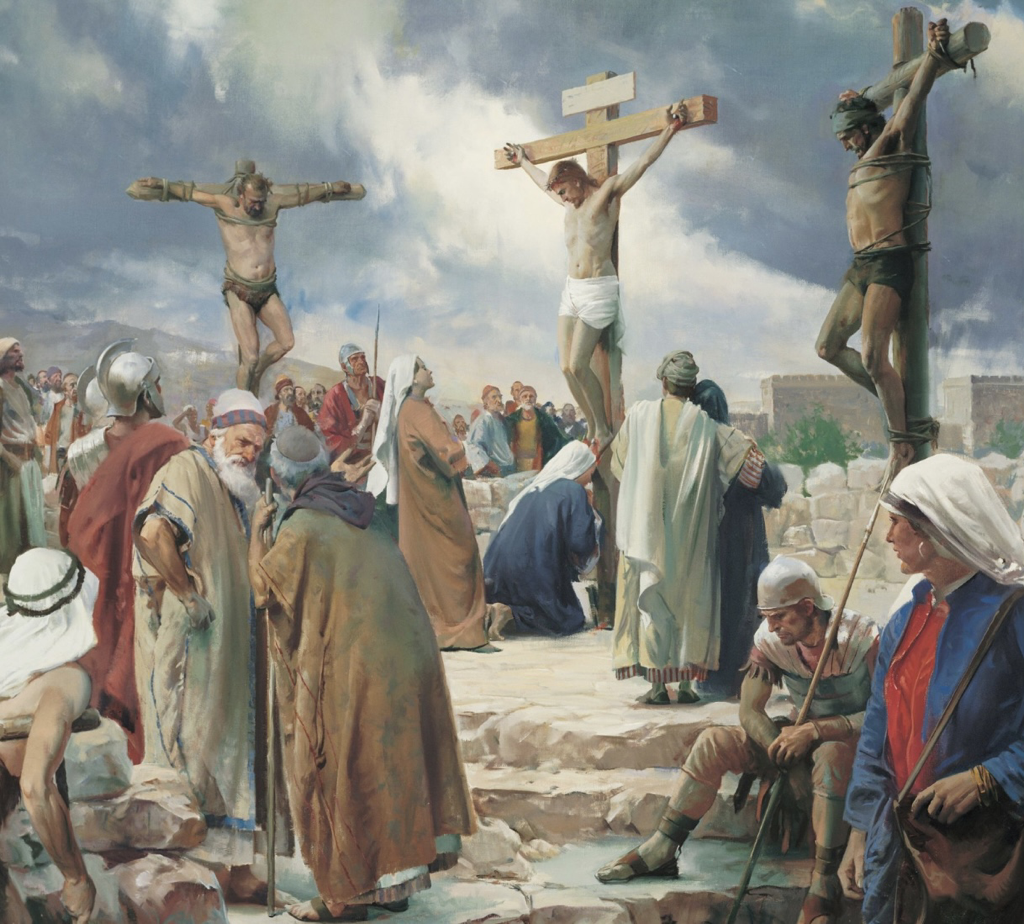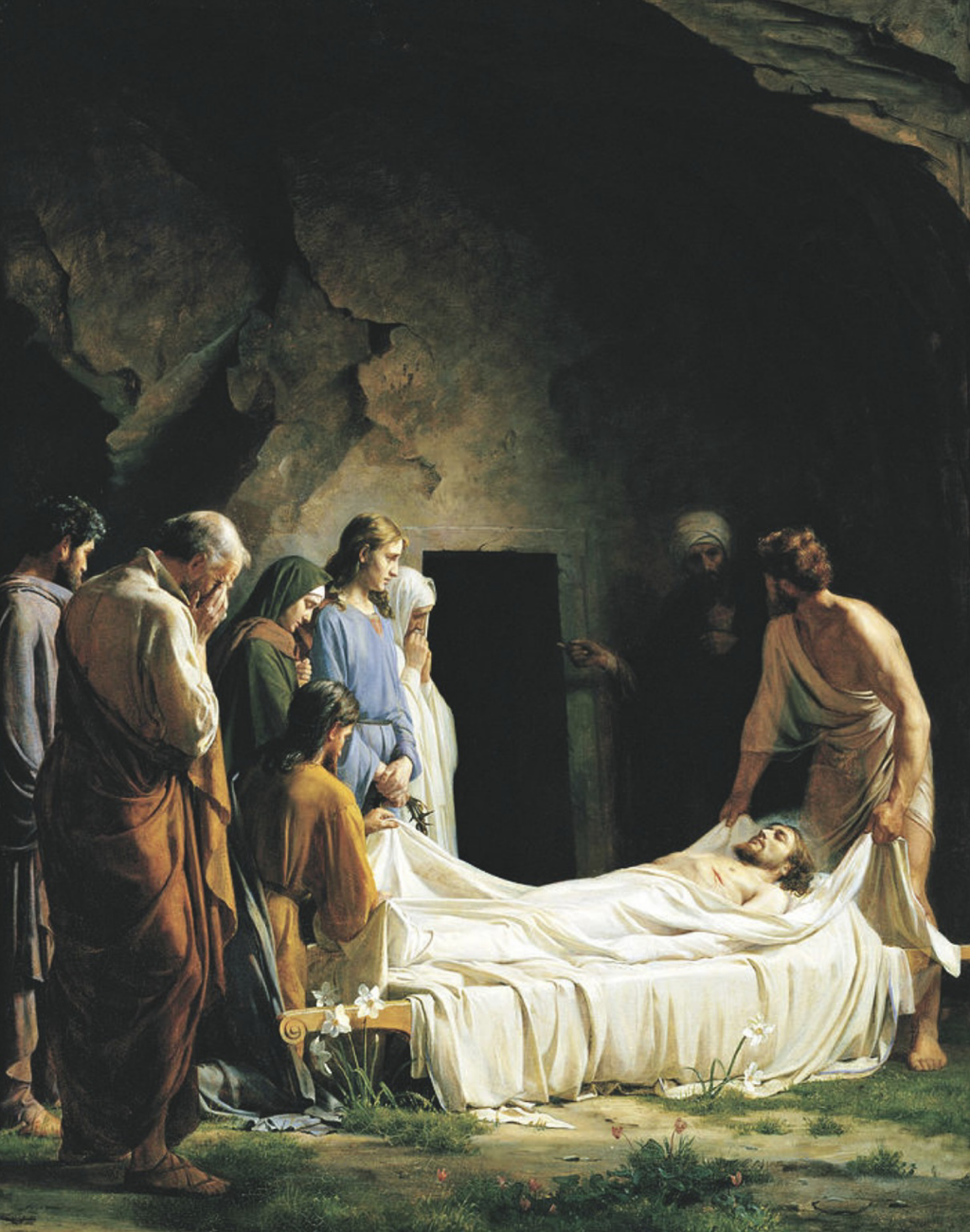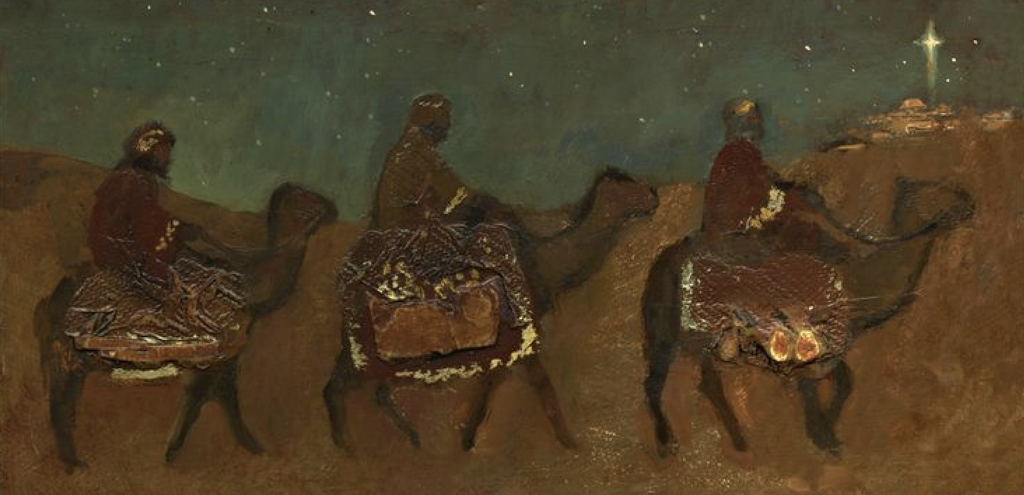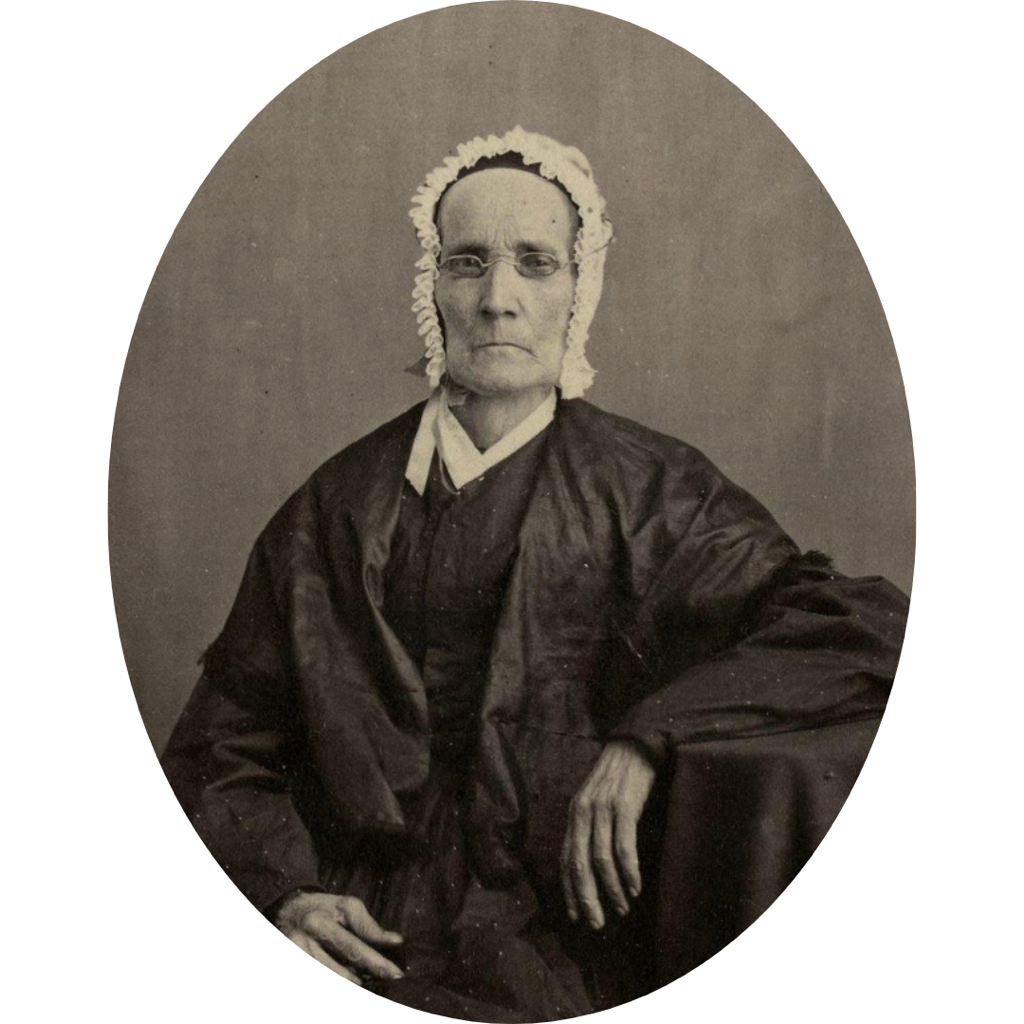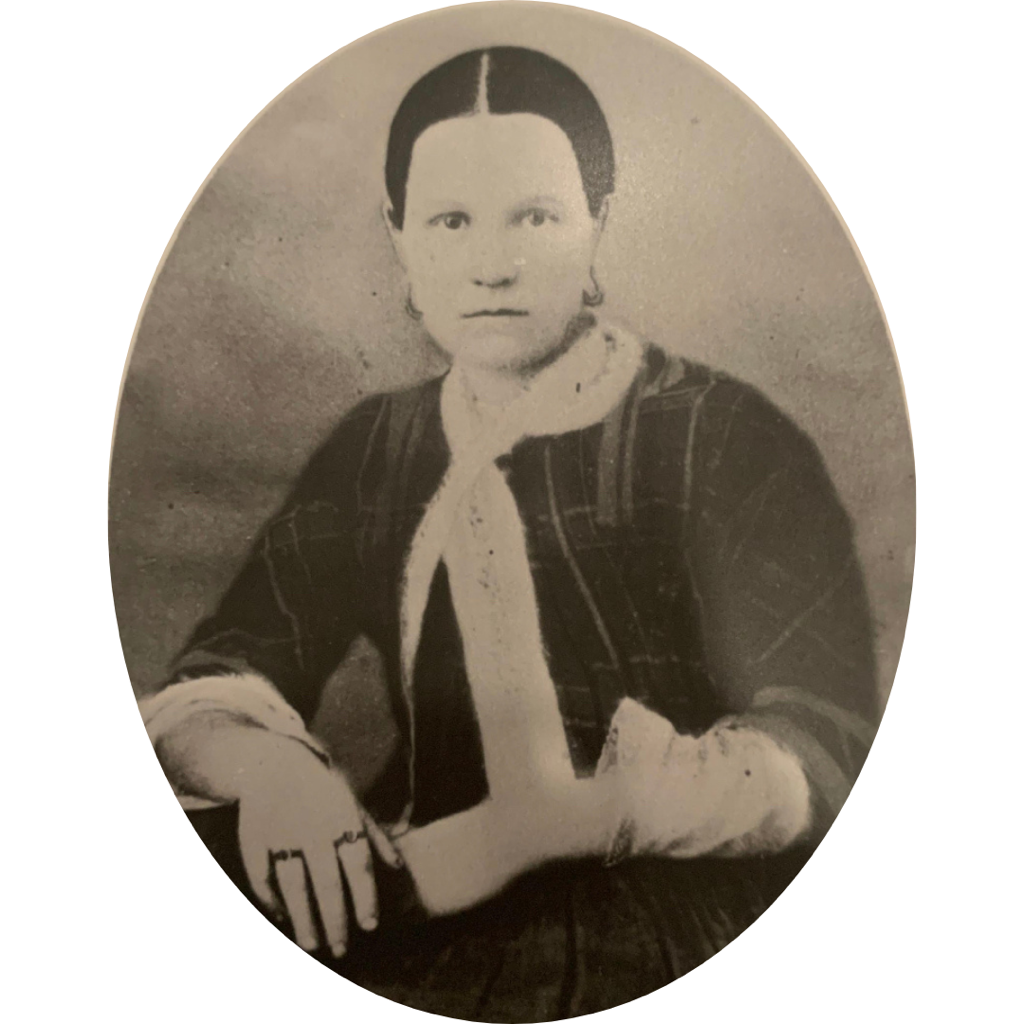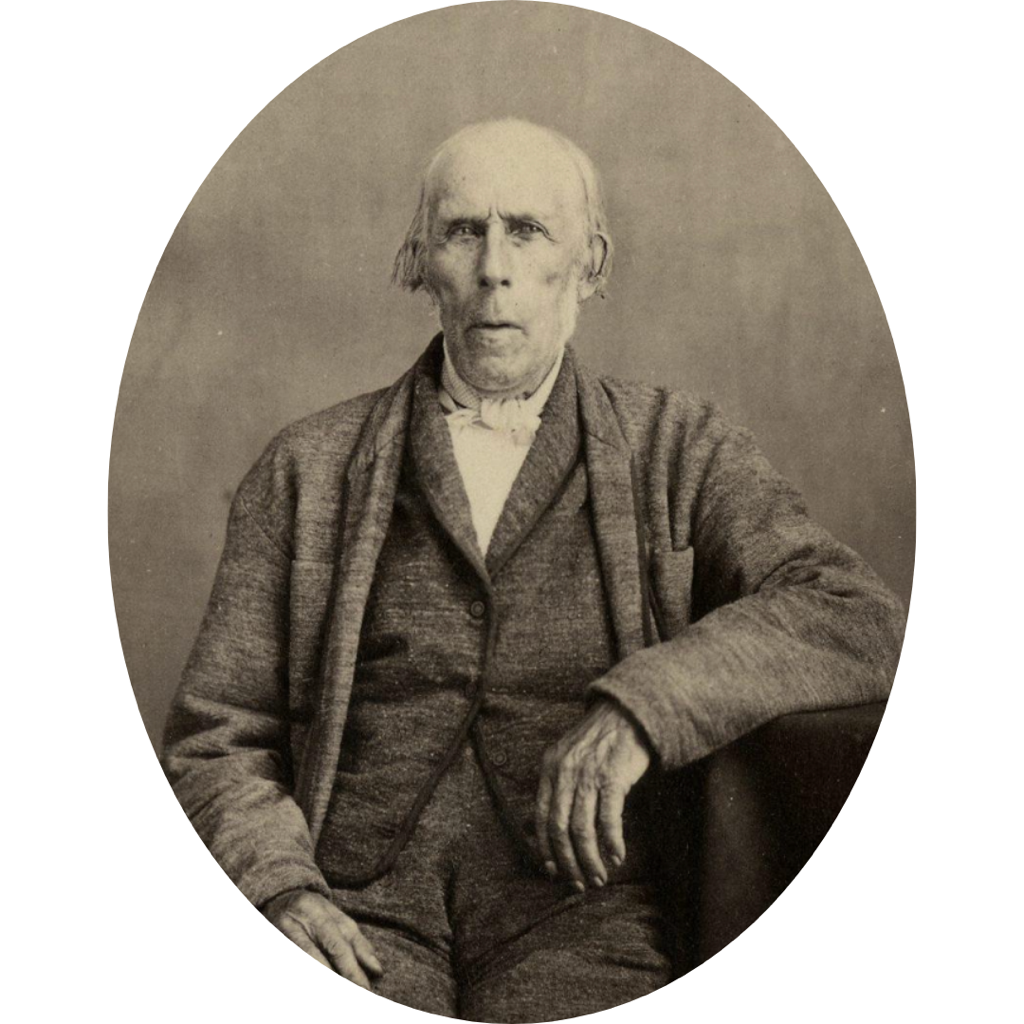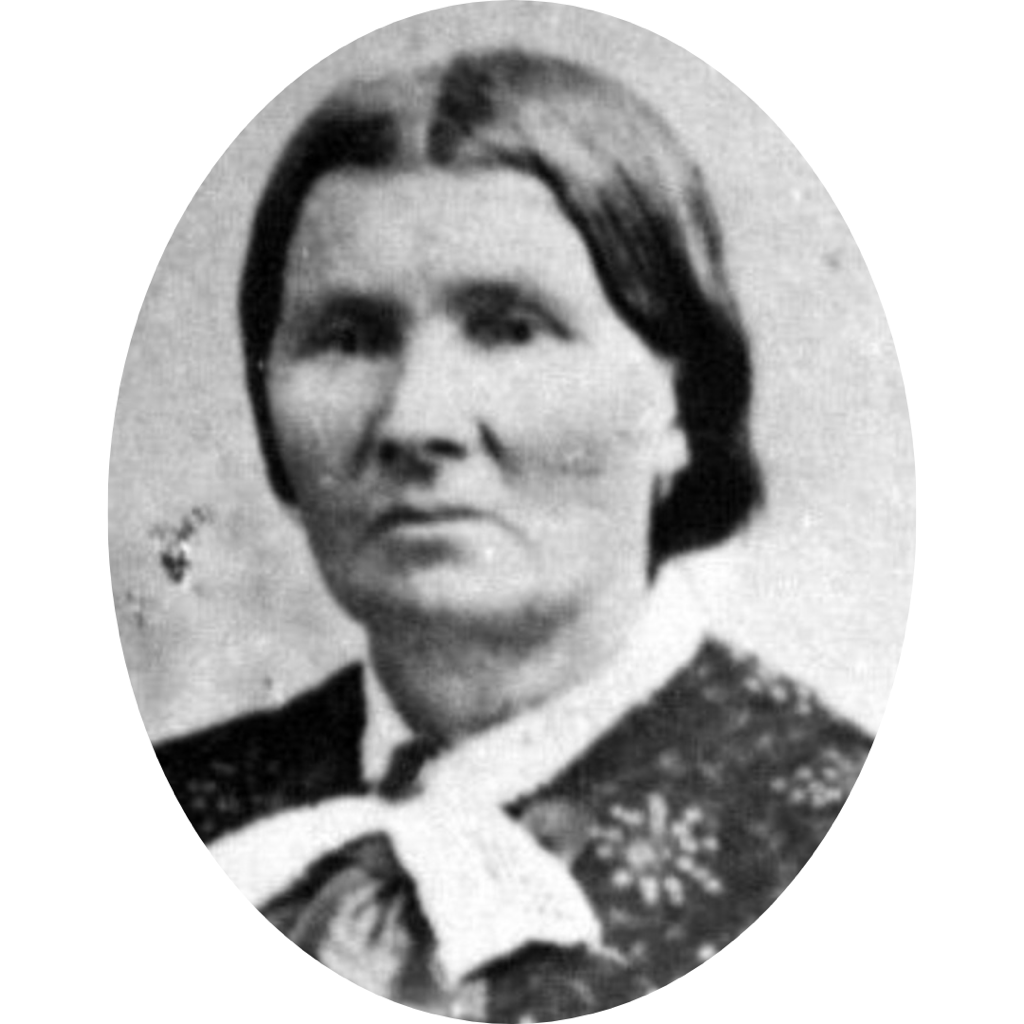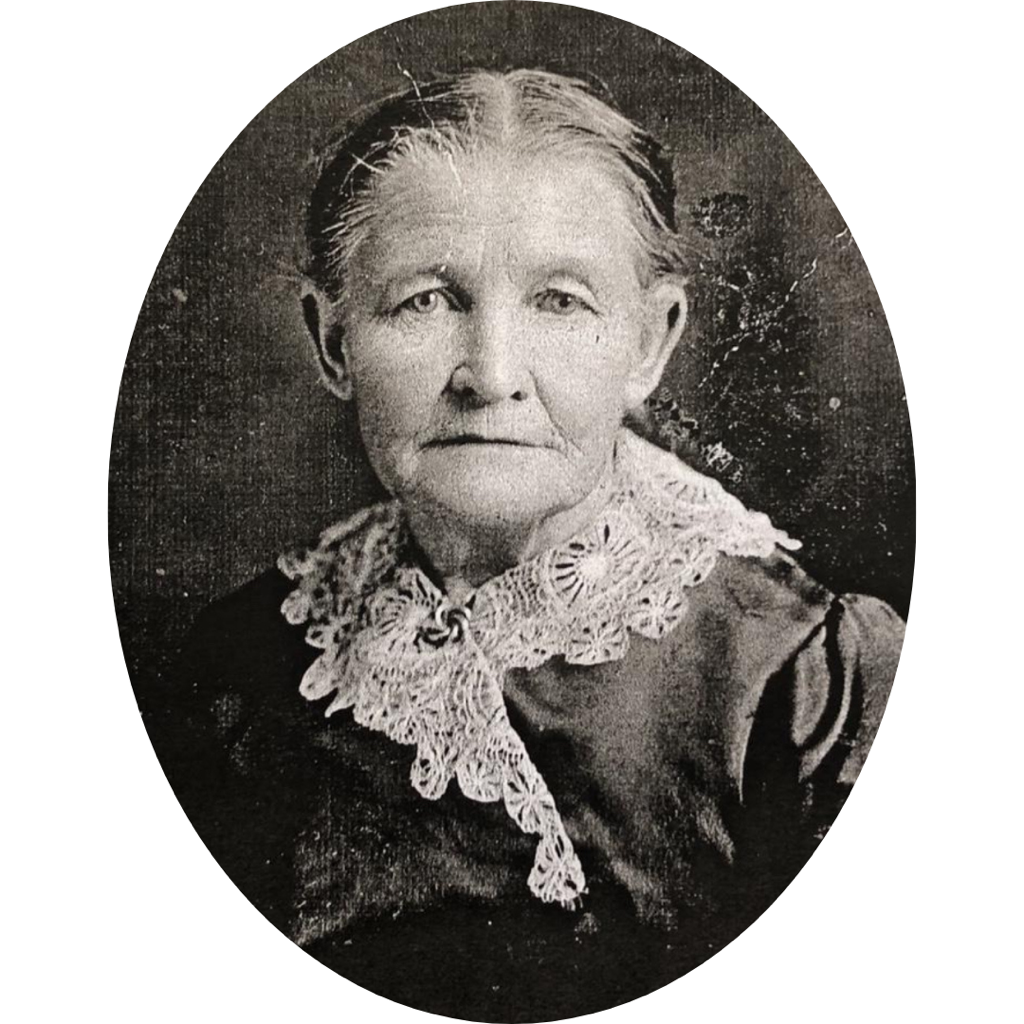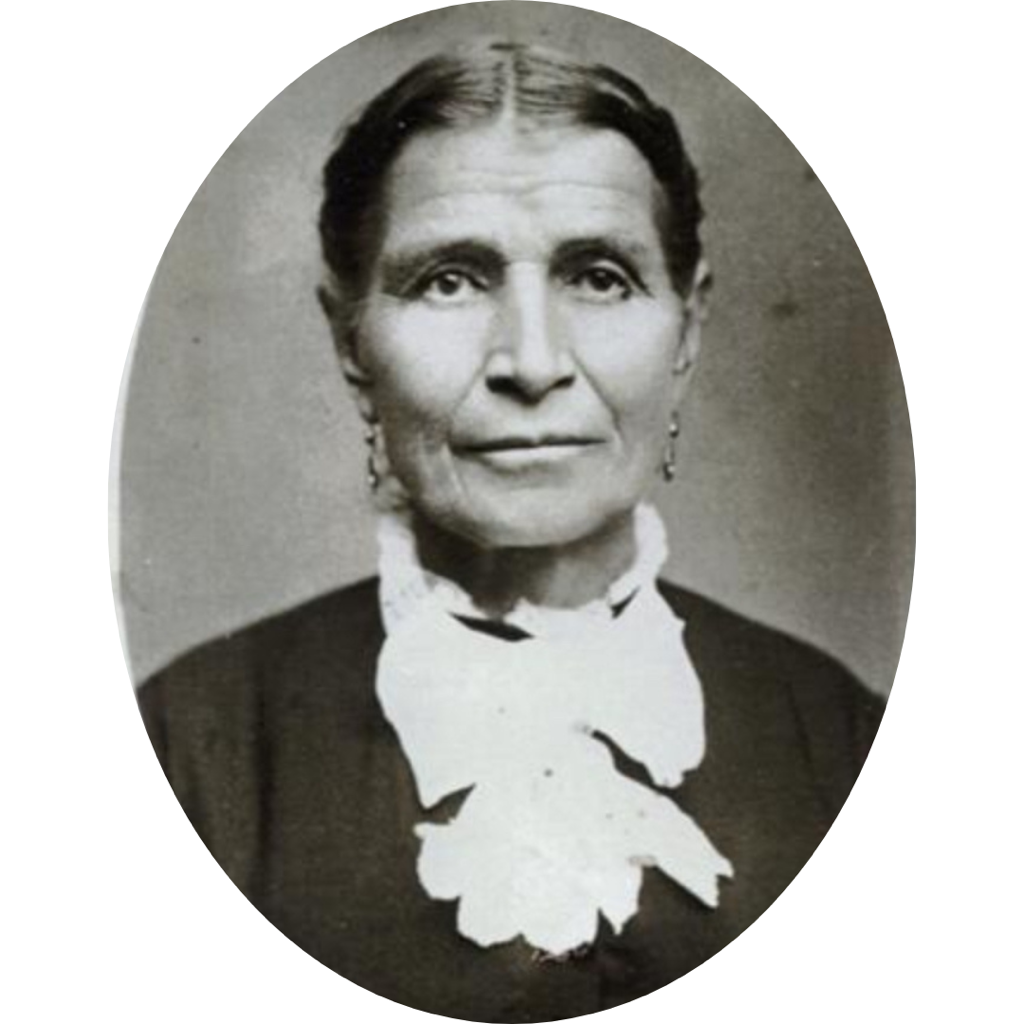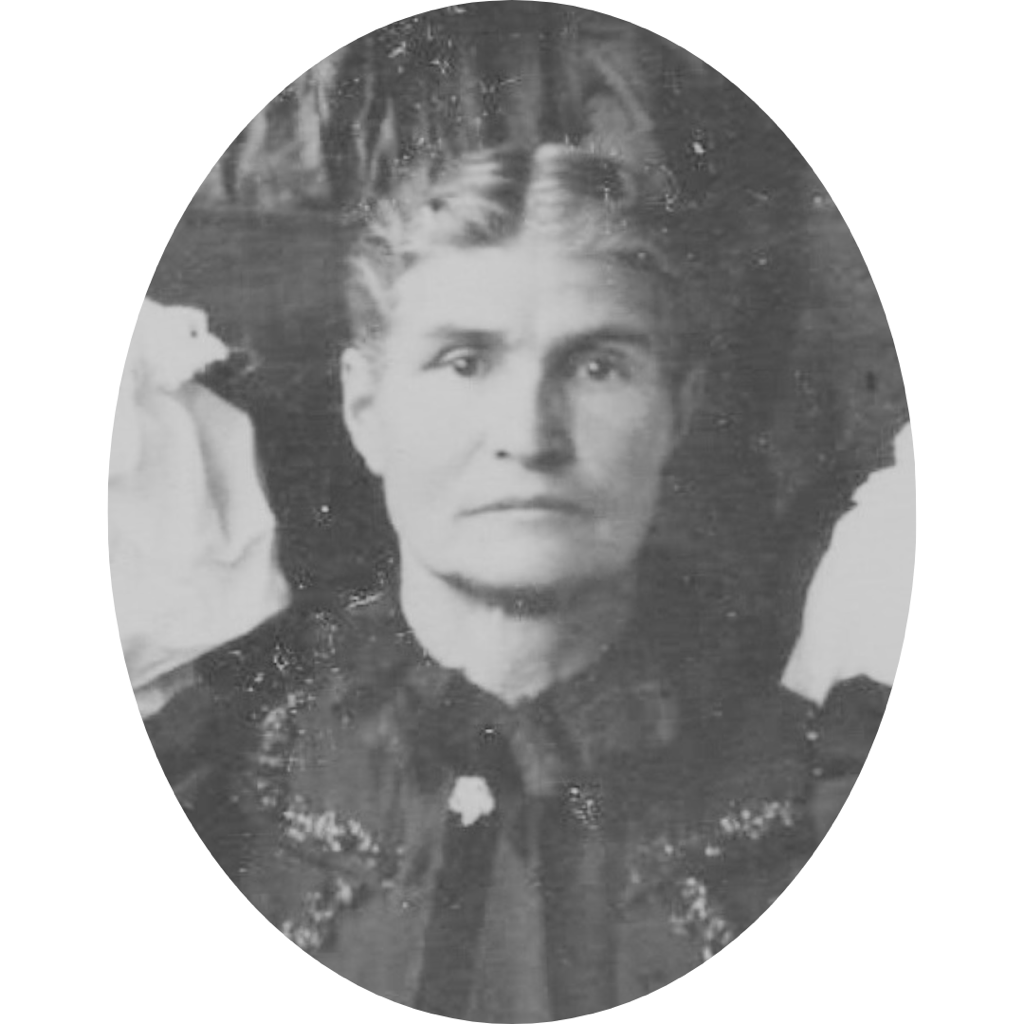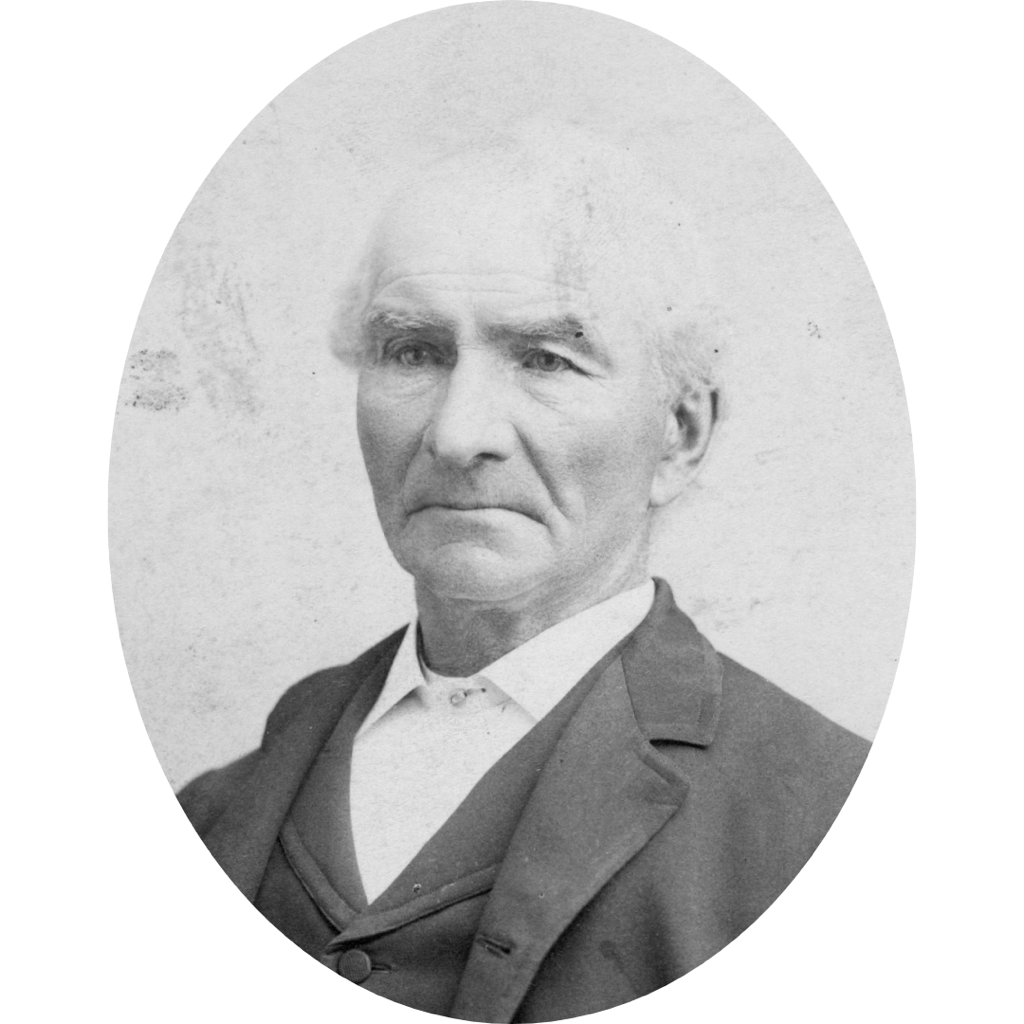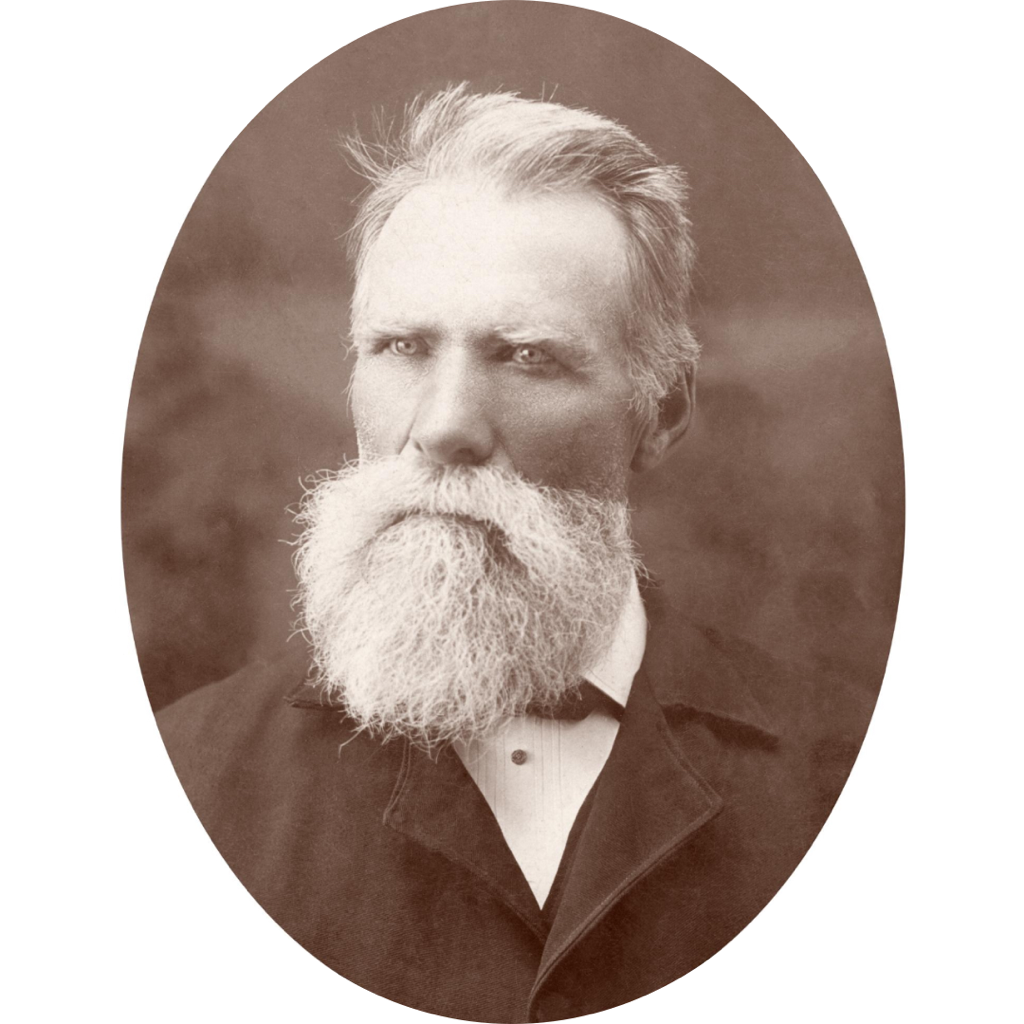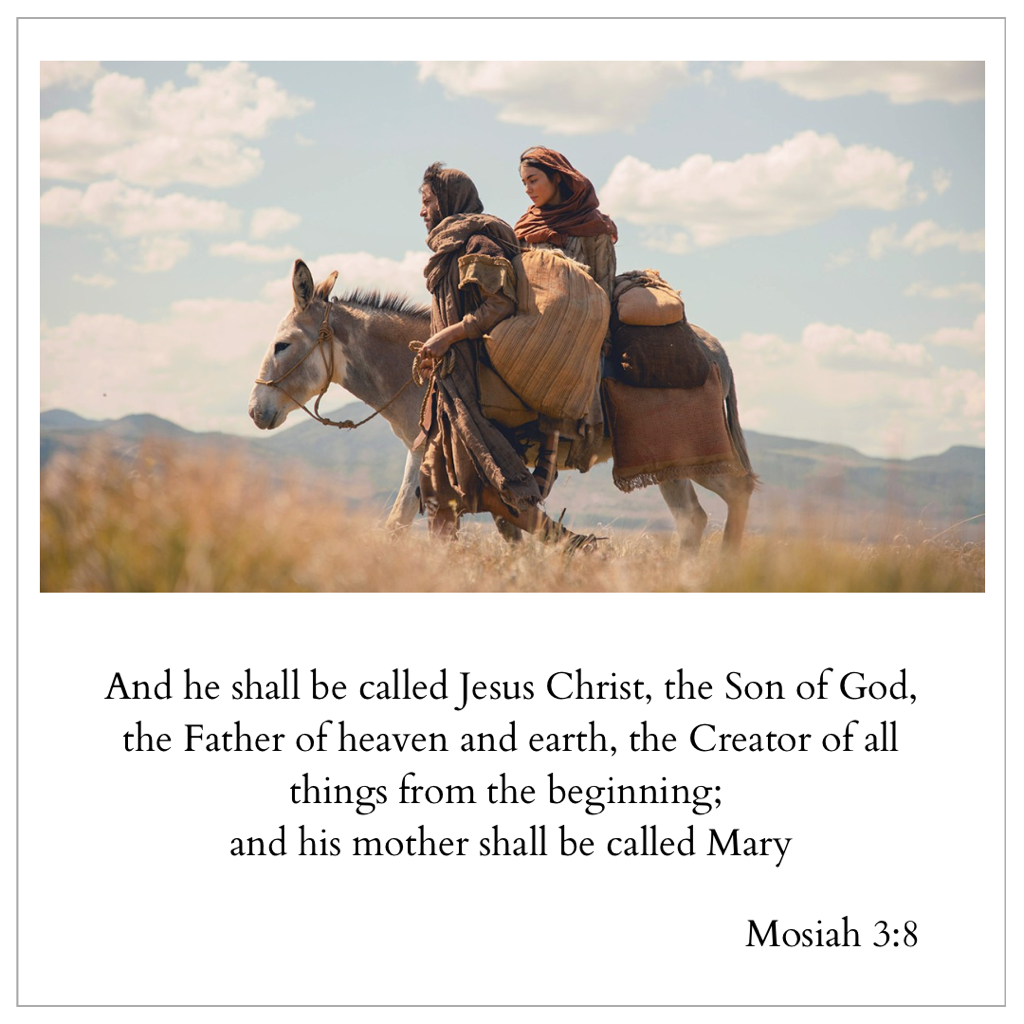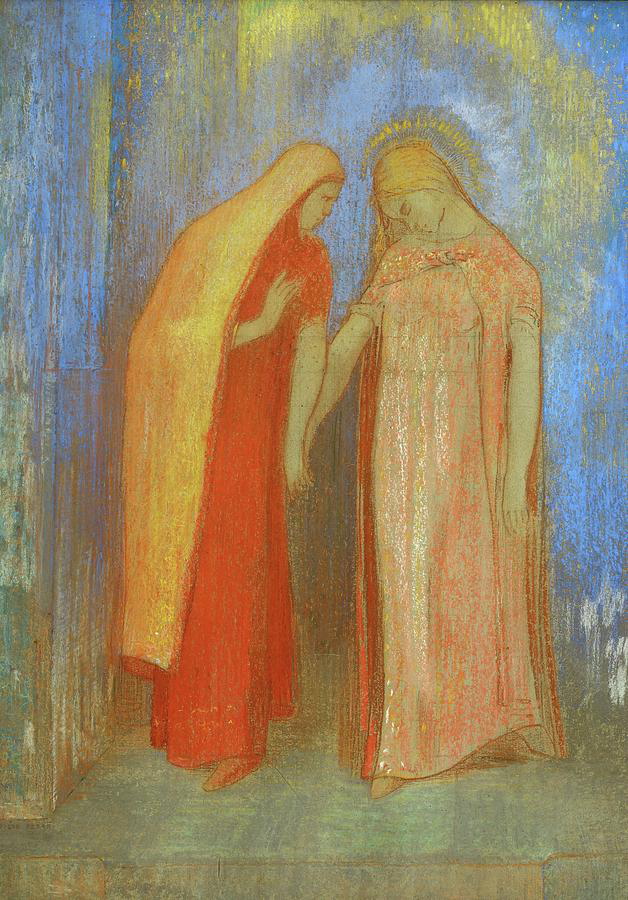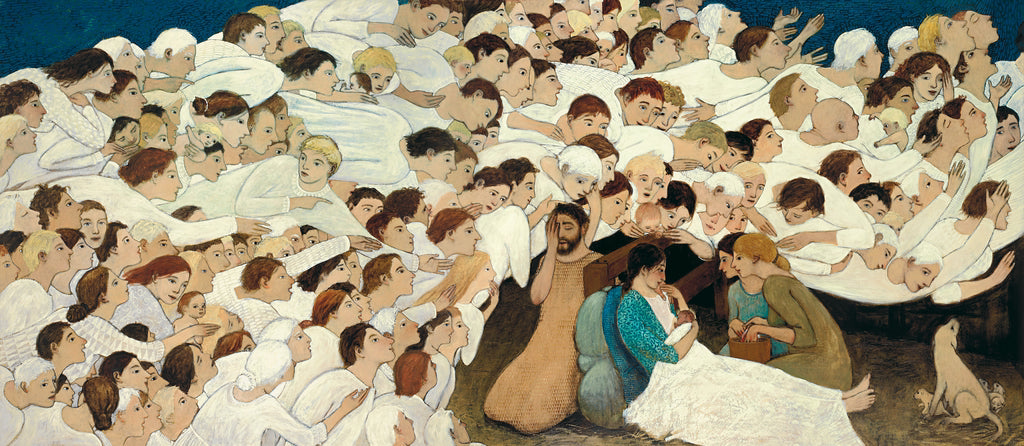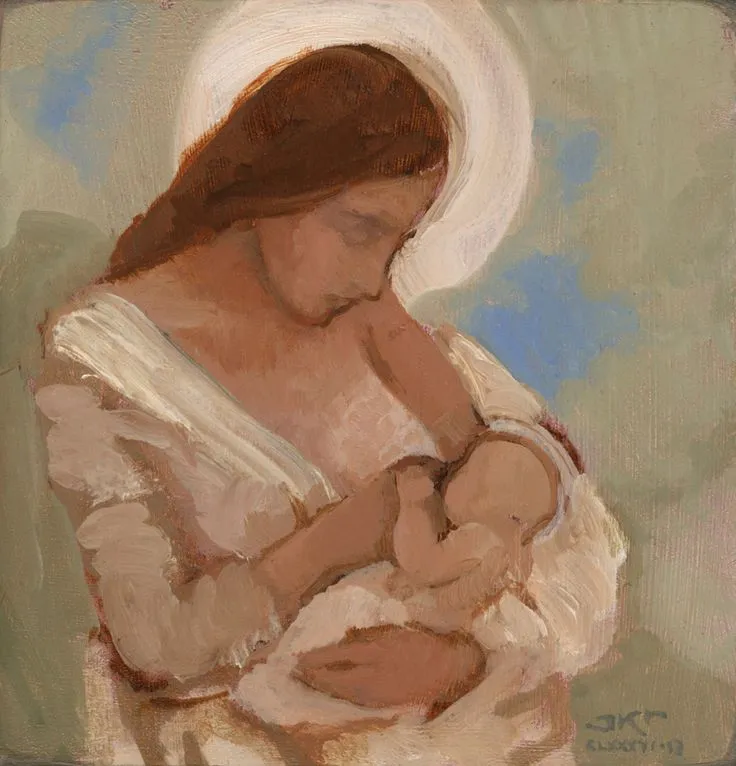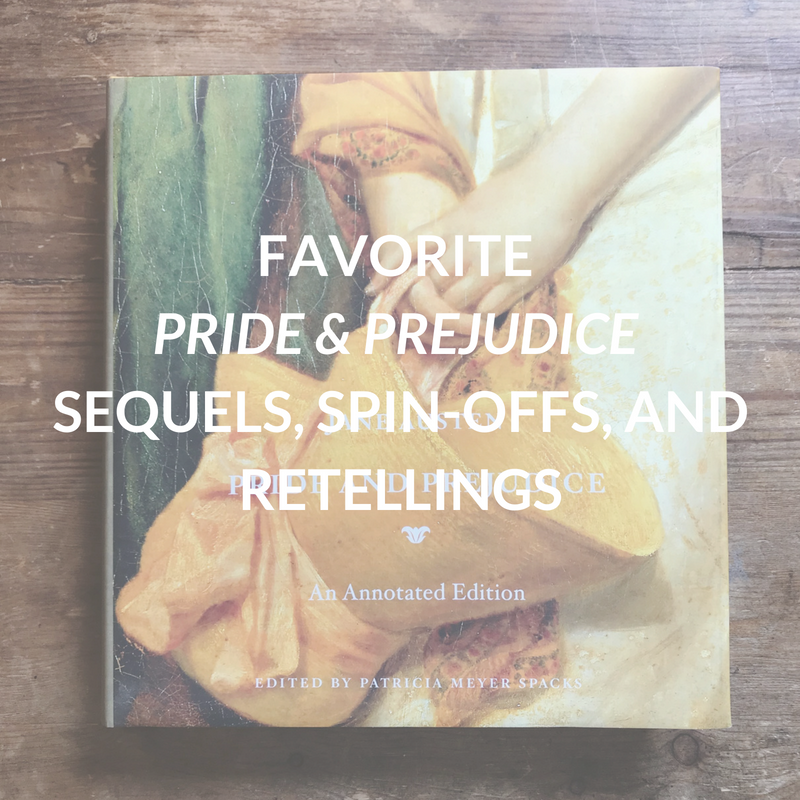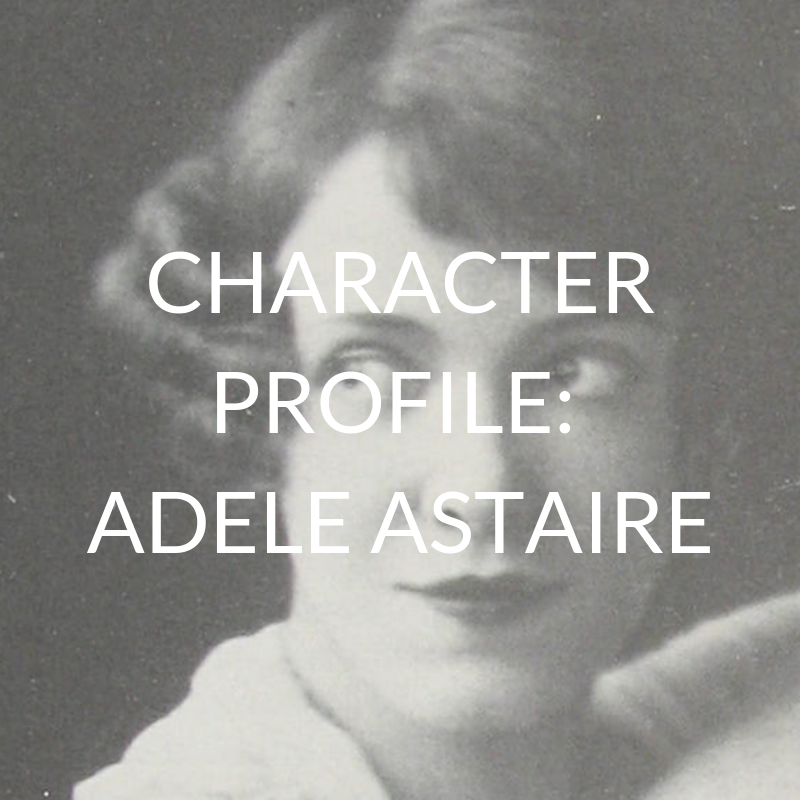|
Ever since our daughters have been attending Catholic preschool in our neighborhood, I’ve been drawn to how special the Easter season is within their faith. The reverence, remembrance, and ceremony have inspired a motivating holy envy that has made me take a closer look at how we celebrate Easter in our own home. For several years, I was disappointed in how Easter came and went with so little preparation or consideration on my part. Easter egg hunts and baskets, Easter dresses, and Easter Sunday worship made for a happy weekend—and I have the most treasured memories of these times from my childhood—but seeing what Easter could be got me thinking. How could I make our Easter worship more significant for our family? How could we make this a season more similar to Christmas, wherein we could keep our eye on the Savior as we celebrate his life, Atonement, and Resurrection, while remembering with reverence the sacrifice he made for us? I scoured Pinterest and Instagram, looking for ideas. I was delighted to find that so many other families had set out to do something similar, and I found a lot of inspiration. On and off throughout 2022, 2023, and 2024, I have been making plans and purchasing items, piece by piece, to bring together our very own heirloom Easter advent. Somethings I had already, and everything else I bought or created over the last couple of years. It has been an investment of time and money, but it has been worth it—not only because of the collection of items I now have to help point my family toward the Savior, but because of how much I have been able to immerse myself in these stories and thereby come to know Jesus Christ even better for myself. Our advent starts on the Thursday before Palm Sunday and goes through the Monday after Easter. We follow the timeline of the last events of Christ’s life, as well as his visit to the people of the Americas in the Book of Mormon. Each day has a story card with scripture references, a piece of artwork, and an egg filled with a scripture and at least one object. Some days also include a picture book and additional objects. You could easily add hymns, scripture videos, coloring pages, and activities as well, but I’m finding that simplicity works best for us at this stage of our lives. The kids love opening the eggs each morning, and we try to discuss the story and scriptures together as a family. This is our second year doing this advent, and it has made such a difference! This year, we even moved Easter baskets to the first day of Spring, and I am excited to see the effect of keeping Christ at the center of our Easter celebrations. ResourcesAs I mentioned before, I’ve been dreaming this up and adding to it for years. That has allowed me to buy things over a period of time, to wait for sales, and to let the Pinterest algorithm add inspiration catered to my style :) The book collection has been an especially fun addition because each book is now part of our library, which we can refer to throughout the year, not just at Easter. Below, I’ve included as many of the resources I’ve found for anyone looking to get started. Looking for something simpler? Check out my Pinterest inspiration board where you can find easy DIY advents as well as advents for purchase or download.
ArtworkFor artwork, we turned to a few of our favorite religious artists, including Harry Anderson, Carl Bloch, Walter Rane, J. Kirk Richards, Jorge Cocco Santangelo, and Minerva Teichert. One thing I might do differently in the future is using more art each day. I love how different artists portray the same scene, and there are so many beautiful pieces to choose from! Our church website has many wonderful options available for download. Next year, I’ll fix some typos. We’ll keep the Jesus peg character out for everyday. I’ll see if I feel up to adding any of the music, books, animated stories, crafts, activities, etc. that I wasn’t up to this year. And perhaps we’ll highlight more people or more of the events of Holy Week or Christ’s life that we didn’t focus on this time. I’m mostly just grateful to have this foundation to get us started from here on out. As Easter comes to a close, I’m feel like this has accomplished what I hoped it would. We have remembered, we have celebrated, and we have drawn closer to Christ. My children know Him better, and the spirit of this season has been continuously in our home.
1 Comment
In recent years, as I’ve considered the story of the wise men, I have been struck by how well they knew the prophecies of Christ and the stars in the sky—so well, in fact, that when the sign did appear, they noticed it and were able to recognize it for what it was. And then, upon further study, I started to wonder… what prophecies or scripture had been their guide? I think it’s easy to assume that somewhere in the Old Testament there must be mention of the sign of the star at Christ’s birth. But actually, there isn’t (3). And though these men were very learned in spiritual things, they didn’t seem to have known about the scripture foretelling Bethlehem as Christ’s birth place (Matthew 2: 1-6). So what is their story? “The Brightest Star” by J Kirk Richards Magi from the EastAccording to Dr. Jason Combs, Bible Scholar/Historian, the Magi would have been priests outside of Judaism (1). A simple idea, and yet it speaks beautifully to how our interfaith beliefs in Jesus Christ can lead any earnest, seeking follower to Him. Whatever their religion, and though it was removed from establish Jewish tradition, they understood the significance of Christ’s birth and life. I especially loved learning about the possible deeper significance of the gifts they brought: Gold, a common gift for a King; Frankincense, an offering to heavenly Gods as a precious incense that rises up to the heavens; and Myrrh, a herb used in death and burial that speaks to an understanding of Christ’s mission from the beginning (2). Scattered Tribes of IsraelSo who were the Magi? If they were priests outside of Judaism, what was their faith? While there is no way of knowing for certain, I enjoyed researching different schools of thought on this topic. We have scriptural accounts of the scattered tribes of Israel, but not where they all ended up or how they may have continued to live their religion. As a member of the Church of Jesus Christ of Latter-day Saints and a student of the Book of Mormon, my faith is built in part on the idea of another testament of Jesus Christ, far from Jerusalem. It is part of my faith that God had more than one prophet on the earth at a time when geography divided His people (3). The Nephites of the Americas recorded their own prophetic witness of the coming of Christ. A prophet named Samuel prophesied that the people would know of Christ’s birth because a new star would appear, and that great lights would appear in the heavens, so that there would be no darkness in the night. “Therefore, there shall be one day and a night and a day, as if it were one day and there were no night” (Helaman 14:1-5). This scripture is part of my Christmas story- and with the scattering of Israel, it makes sense that other branches of God’s scattered people would likewise have been given signs of Christ’s birth (5). One theory I came across harkens back to Daniel, Shadrach, Meshach, and Abednego (2). Nebuchadnezzar besieges Jerusalem and upon returning to Babylon brings many elite Hebrew children with him, including Daniel, Shadrach, Meshach and Abednego. These boys prove themselves and join a class of Magi, wisemen, in Nebuchadnezzar’s kingdom. Daniel did not return from exile, and having faithfully followed his religion and dedicating his life to the people of Babylon, it seems likely that his faith could have grown roots and spread. Could these Magi from the East have been disciples of the remnant of Daniel’s theology? The Bible Dictionary simply defines these men as “prophets on a divine errand” (4). They knew the signs and the mission and purpose of Christ’s life, and as such, they were guided to be witnesses of the presence of God on earth to their people and for all generations thereafter (5). Where they came from is less important than that they came. It’s further evidence to me that God does not abandon his scattered children, and that wherever we may be, we can find our way to Him. Wise men still seek himWise Men still seek Him. I’ve heard this expression many times before, but in light of these thoughts, this idea feels somehow more universal. We come to Christ in different ways, from different places, with different gifts to offer. In seeking Him, we find Him from different sources- obtainable sources suited to the time and place in which we live. And what’s most important to me is that any efforts we make to seek Him will bring us to Him. Because He came, because He has a prophet on the earth today, because of these testaments that have been preserved for our time which acquaint us with Him, because He left the Spirit to be with us, and because so many others just like us are on our paths to help us on our journeys toward Him. Resources(1) The Christ Child: Behind the Scenes
(2)”The Magi, How Did They Know?” By Diane Rudd (3) “How Did the Wise Men Know to Look for a Star?” By Brad Wilcox (4) Bible Dictionary: “Wise Men of the East” (5) Bible Dictionary: “Magi” The Lake Family | James Lake Company (1850)
And yet, by waiting just two years, they were in a better position to heed God’s call, to serve and to lead others, and to ensure their own self-reliance in a time when the church had many destitute members to take care of in a land with limited resources. It’s a personal testimony to me of how God works with us individually- when some are called to “take no thought for your life, what ye shall eat, or what ye shall drink,” others are commanded to “prepared every needful thing” (3 Nephi 13:25, Doctrine and Covenants 88:119). Waiting can be a refiner’s fire, patience a builder or character. For “if ye are prepared, ye shall not fear” (Doctrine and Covenants 38:30) The Steed Family | Milo Andrus Company (1850)
Though she was well outfitted for the journey and joined together was a widowed father to make the journey easier for both families, Caroline had very little when she arrived in the Salt Lake Valley. She sold the outfit that had brought her across the plains, bought a small log cabin, and then had to find a way to feed and cloth her family. Though she was a beautiful seamstress, money and work were scarce, and she did her best with payments of farm produce and discarded clothing. Even still, when one of her Steed relations returned from the handcart rescue company with with his niece, Sarah Steed, Caroline took her in, bathing her and dressing her in her own clothes. She would eventually sell her little log cabin to the church, the land of which lies under the Northwest Section of the Tabernacle in Temple Square. Caroline never remarried. She was self-reliant, hard working, and still had room to be generous. She would remain close to her children and posterity all of her life, with these words written on her grave upon her death: “Caroline Steed was a noble woman.” The Argyle Family | Edmund Ellsworth Handcart Company (1856)
Joseph was a tinner by trade. He had brought sufficient tools and a box of heavy tin in order to start a business in Salt Lake City. However, the company quickly discovered that the green wood of the newly built handcarts could not hold up to the rigors of the trail. After just two days time, Joseph set to work reinforcing the handcarts with his tin, ultimately using all of it to secure every handcart in the company over the course of their journey. It took 109 days for them to walk the 1400 miles to the Salt Lake Valley. For six of those weeks, pregnant Rebecca carried her youngest child on a pillow in her apron because the little girl had become too ill to walk on her own. She nearly gave up, but the thought of protecting her helpless daughter and unborn child gave her the strength to keep going on her worst day. Without having walked with them, knowing their remarkable story has made it part of my own. I feel a personal connection to the time of “the Restoration” and the history of my people and our faith. And I’ve considered what that should mean to me today. Elder Dieter F. Uchtdorf of the Quorum of the Twelve Apostles reminds us to take part int he ongoing restoration. In the September 2020 Ensign, he said, “Sometimes we think of the Restoration of the gospel as something that is complete, already behind us—Joseph Smith translated the Book of Mormon, he received priesthood keys, the Church was organized. In reality, the Restoration is an ongoing process; we are living in it right now. It includes ‘all that God has revealed, all that He does now reveal,’ and the ‘many great and important things’ that ‘He will yet reveal’ (Articles of Faith 1:9)… When our time in mortality is complete, what experiences will we be able to share about our own contribution to this significant period of our lives and to the furthering of the Lord’s work?f Will we be able to say that we rolled up our sleeves and labored with all our heart, might, mind and strength? Or will we have to admit that our role was mostly that of an observer?” Or a descendant? And so I will try to take this to heart—How am I furthering the work of the Restoration today? How do I Hear Him to know what he would have me contribute? Do I have something to offer? Can I carry another? Am I listening and ready to act? Noah Brimhall | Handcart Rescue Company
Family Tree: Me > Mom > Grandpa Brimhall > Logan Brimhall > Norman Andrew Brimhall > Noah Brimhall Me > Dad > Grandpa Cooley > Lillian (Lydia) Vaughn Strebel Cooley > Ethel Una Roberts Strebel > Adelberg Carlos Roberts (3) > Daniel Roberts (52, widowed) | Harry Walton/Garden Grove Company, May 17, 1851 (130 days)
Me > Dad > Grandpa Cooley > Lillian (Lydia) Vaughn Strebel Cooley > Ethel Una Roberts Strebel > Martha Eliza York (infant) > Hannah Carter (40) and Aaron Merton York Sr. (42) | William Snow/Joseph Young Company, June 21, 1850 (102 days) Me > Mom > Grandma Brimhall > Anna Laura Farnsworth > Eliza Ann Hess > Elizabeth White > Ann Eliza Adelaide Everett (4) | Jedediah M Grant - Willard Snow Company, June 19, 1947 (107 days) Me > Mom > Grandma Brimhall > Anna Laura Farnsworth > Eliza Ann Hess > Elizabeth White > John Stout White | Mormon Battalion Me > Mom > Grandma Brimhall > Anna Laura Farnsworth > Wilford Burt Farnsworth > Mary Isabelle Tidwell > Susan Briggs Allen (17) and Peter Tidwell (21) | Isaac M Stewart Company, June 19, 1852 (70 days) For the last year or so, I have felt drawn to the women of the scriptures. Their stories are often brief but impactful, and as I have begun to see them for the real people they are, I have also begun to see myself reflected in their narratives. I feel a strong kinship and sisterhood with them, and I long to know more about them—their thoughts, their views, their stories. More than any other woman in scripture, Mary is revered and remembered. And yet we still know so little about her. Thousands of years later, we can only truly know so much about her and her experience, but I am finding beauty in learning more about the time in which she lived and the people she called her own. I am coming to know her as I take quiet moments to put myself in her place. It’s speculation, on one hand, but I still feel I am learning from her as I learn of her. And as I more fully see God’s hand in her life, I feel new eternal truths that now resonate in my own. 1. Mary and ElisabethHave you ever considered the significance of the Angel Gabriel telling her that Elisabeth too was experiencing a miraculous pregnancy? That our Heavenly Parents made sure this young woman was not alone in her experience, and provided a kindred sisterhood when she most needed it? With Elisabeth, Mary was not alone. She was understood. I love to think of the tenderness between these two women, and what their shared experience must have meant to them both. Heavenly Parents know the timeline. People are put into our lives and into our families. Our timelines, God’s timelines, linked timelines. I also love to think of her spending those first three months with Elisabeth, another woman of God so filled with the Spirit that she recognized Mary as “blessed among women” and the fruit or her womb as blessed as soon as Mary arrived (Luke 1:40-42). Elisabeth, wife of the priest Zachariah, both of whom were described as “righteous before God, walking in all the commandments and ordinances of the Lord blameless”— this is who welcomes Mary with open arms. What a safe haven for Mary during those tender months! I imagine it was a time of study, prayer, and learning as both women prepared to fulfill their ordained roles as mothers.
These verses also disclose much about Elisabeth. Because of the unimpeded flow of God’s spirit into her, it is evident that she has been laboring in spiritual preparation for mothering a child of promise. Moreover, we can safely presume that these intense efforts do not differ much from her past actions, but rather show her to be a person of long-standing spiritual character. Her efforts to set her life squarely onto God’s path also open her to the spirit of prophecy wherein she both learns what she cannot know about Mary and her special child, and predicts what is yet in store for her young cousin (see 1:42–45). In fact, in speaking about Mary, “the mother of my Lord,” Elisabeth acts as her own son will act—as the herald of the Messiah. Moreover, her unswerving worthiness, hinted at in these verses, will bring to her unborn son an unparalleled blessing—he will be “filled with the Holy Ghost, even from his mother’s womb” (1:15; also D&C 84:27).” -BYU New Testament commentary by S. Kent Brown “La Visitation: Mary Visits Saint Elisabeth” by Odilon Redon 2. Mary and the ScripturesAs I understand it, it is most likely that during this time period a woman like Mary would not have been literate. As a religious person, however, she would have been knowledgeable in the scriptures and very familiar with the Old Testament (1). Consider all she knew from her own words in the her Magnificat, The Song of Mary (Luke 1:46-55). Even before she ever held the Savior in her arms, she knew Him, as we can know Him, through the scriptures. And in those nine months leading up to the birth of her son, I wonder what scriptures brought her comfort or insight or new meaning. I think of the prophecies of Christ in the Old Testament, and wonder what parallels she now saw. ”Therefore the Lord himself shall give you a sign; Behold, a virgin shall conceive, and bear a son, and shall call his name Immanuel.” -Isaiah 7:14 ”For Unto us a child is born, unto us a son is given: and the government shall be upon his shoulder: and his name shall be called Wonderful, Counsellor, The mighty God, The everlasting Father, The Prince of Peace.” Isaiah 9:6 ”But thou, Bethlehem Ephratah, though though be little among the thousands of Judah, yet out of thee shall he come forth unto me that is to be ruler in Israel; whose goings forth have been from of old, from everlasting.” Micah 5:2
|
